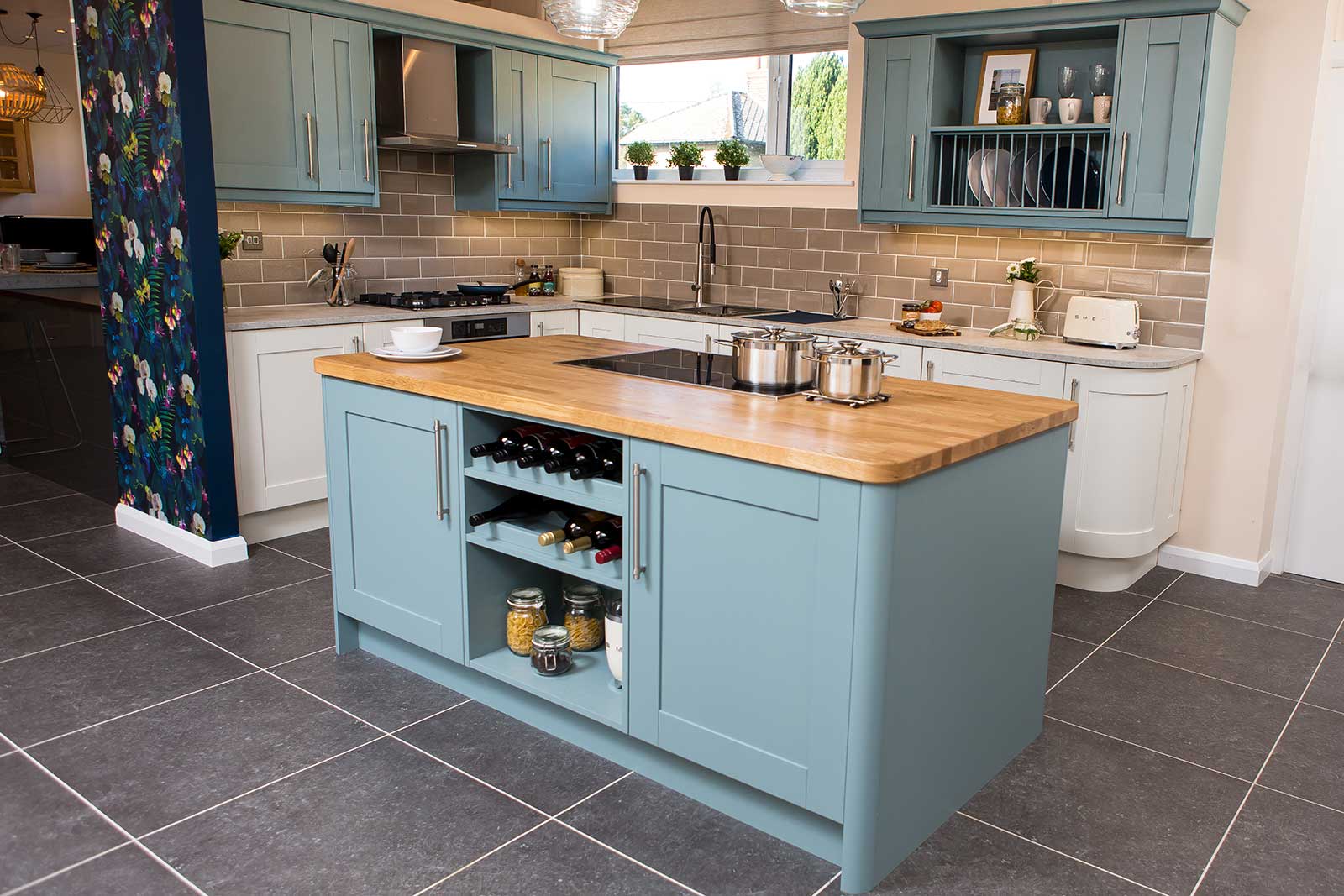Kitchen islands have been a popular interior design feature for some years now and many homeowners feel a high-end kitchen renovation wouldn’t be complete without one. Used to conceal storage, house ovens and sinks and make the space more sociable, a well–designed and well–built island can add usability and style to your kitchen.
If you’re currently planning a kitchen renovation of your own, an island may well be right at the top of your wish list. To help you find the perfect island for your home and for your culinary needs, we’re taking a closer look at this kitchen phenomenon and everything it has to offer.
Why have a kitchen island?
Extra storage
One of the main reasons homeowners opt for a kitchen island is storage. Even a modestly–sized island can dramatically increase the space you have available for pots, pans, plates, crockery and food. Having extra storage space can make it a lot easier to keep your kitchen clean and tidy and ensure it looks stunning at all times.
Breaking up the space
If your kitchen is a large, open space, an island can help to define the different parts of the room and give it a focal point. If you’ve decided to go for an open plan layout, an island can form the boundary between your kitchen and your dining area or living space. This can help your layout to flow better and make the space more user-friendly.
Making your kitchen more sociable
As islands tend to form the focal point of a kitchen, they automatically draw people towards them. At drinks parties and family get togethers, you’ll often find people congregating around a kitchen island as they pour drinks, get nibbles and socialise.
If you like to host dinner parties and big family meals, an island allows you to face towards your guests as you’re chopping, preparing and cooking your ingredients. Make your kitchen island even more sociable by turning part of the worktop into a breakfast bar and having bar stools tucked underneath. That way, guests can pull up a seat as they chat to the chef working away in the kitchen.
How much does a kitchen island cost?
Like the kitchen itself, the cost of an island can vary dramatically. If you want a high–end, high–spec island complete with plumbing, electrics and appliances, you could spend as much as £50,000. However, if you’re happy to go with something a little simpler, and even assemble the unit yourself, you could include an island in your layout for as little as £300.
The best way to keep the cost of your island down is to keep it simple. Installing a sink or cooker in the feature can significantly increase the cost, so opt for a clear, open work surface and basic cupboards and you should be able to bring your island in on budget.
Kitchen island trends
Free-standing islands
While most kitchen islands are fitted, it is possible to get free-standing islands that can be moved around to suit your changing needs. Unlike fitted islands, free-standing versions aren’t fixed to the floor. This means they can be moved to the side if you want more floor space or moved close to your countertop if you need extra room to prep. As well as being versatile, free-standing islands are often very affordable, making them a good option for those who want to create a stand–out kitchen on a budget.
Feature islands
Make your kitchen island really unique by choosing colours and materials that are different to those in the rest of the space. Have the base of your island painted in a bolder or darker shade than your other cupboards. You can also choose a work surface that complements your other countertops but doesn’t match them. This technique can add a real feel of depth to your kitchen and help your interior to look that little bit more special.
Oversized islands
Homeowners with large kitchens are increasingly opting for oversized islands. These islands can easily be a few meters across and are used to create a real focal point in the space. In general, oversized islands are fitted with hobs, sinks and other appliances. This helps homeowners to take full advantage of their size and improve their functionality. Oversized islands only really work in large spaces, so make sure your kitchen is big enough to handle the feature before you invest.
Dining islands
Adding an overhang to one end or one side of your island will turn it from a preparation area to a dining area. Having a few bar stools along the edge of an island allows people to sit and eat or drink next to the island and makes it a more family-friendly space.
How to choose the right island for your needs
Before deciding what kind of kitchen island to have in your home, there are a few things you need to consider. Firstly, think about how you’re going to use the space. Will it be for washing up, cooking, socialising or prepping? Do you need the island to define different areas of your kitchen and do you want it to double up as an eating area or social space?
It’s also a good idea to look at the shape of your kitchen as this will often dictate the shape and size of your island. If you’re not sure how big you can go with your island, or how many features and appliances you can have installed, talk to your kitchen designer before making any decisions.
Lastly, it’s always a good idea to think about budget. If your budget is limited, think about opting for a simpler design in order to keep costs down. However, if you’re working to a generous budget, why not push the boat out and make your island a stand–out feature?
Find out more about kitchen islands and kitchen design by exploring our site or dropping into our showroom.
our showroom